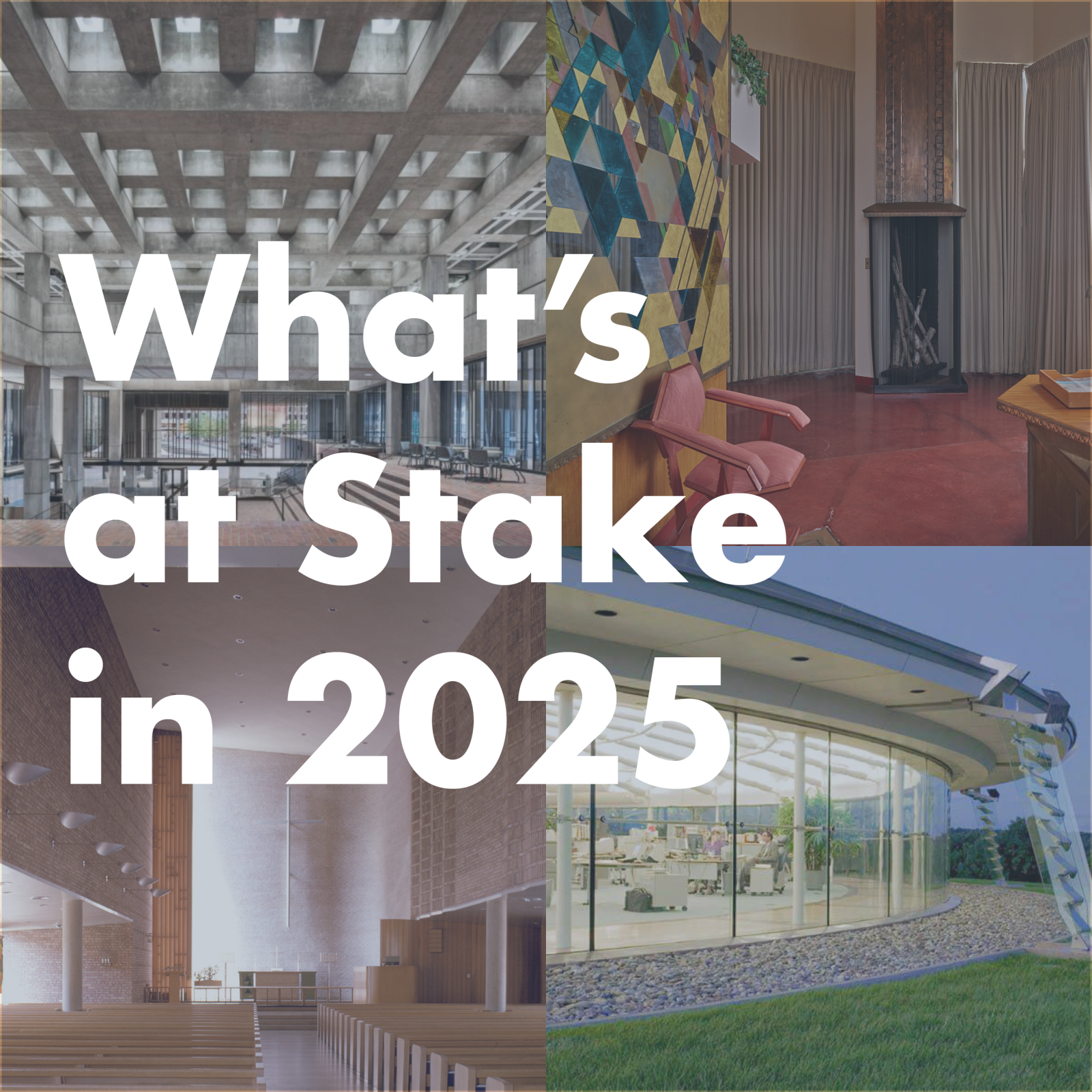As Docomomo US closes out its third decade of education and advocacy work in the United States, I’d like to start by mentioning several recent significant preservation wins.
In the month of December, the Boston Landmarks Commission voted to landmark Boston City Hall and the New York Landmarks Preservation Commission voted to calendar the former Whitney Museum of American Art. Thanks to the hard work of our colleagues in the New England and New York/Tri-State chapters, these are enormous wins for projects that have been often misunderstood, sometimes immensely disliked, and threatened by inappropriate alteration throughout the years. I hope to celebrate with you all at a party inside Boston City Hall on March 20, during Preserving the Recent Past 4.
In 2025, I am looking forward to engaging with our annual theme, Places of Worship, and taking a closer look at the numerous and incredibly diverse resources of this typology, which can be found in nearly every community across the country. While some congregations thrive, many have dwindled over the years, making their complex and often large structures a challenge to maintain. Antiquated systems, experimental materials and extreme development pressures make these community spaces even more susceptible to demolition. I encourage you to join Docomomo US, our chapters, and affiliated groups to document and tour places of worship in your backyards in the coming year.
So, what’s at stake in 2025?
Climate change continues to be one of, if not the greatest threat, to our communities and to our heritage. Docomomo US continues to support our chapters and friends in seeking solutions and strategies for resilience in a time of great challenges. After two back to back hurricanes devastated Sarasota and Florida’s Gulf Coast, I joined our friends at Architecture Sarasota this fall to support their recovery efforts, and I won’t soon forget witnessing the mounds of debris, stacked 10-feet high on either side of the road as far as the eye can see, and the empty beach where the Paul Rudolph-designed Sanderling Beach Pavilions once stood. The effects of global warming are no longer an anomaly, and we will continue to lose vulnerable Modernist structures if we don't address this new reality.
We expect to continue to see threats to demolish many examples of our recent past including Postmodern resources and projects like the Timex Headquarters in Connecticut, which is only 23 years old. We lost the interior of 60 Wall Street in New York, and the Thompson Center in Chicago was reduced to its studs earlier this year after two lengthy and notable campaigns to save the original fabric and design of these projects. It seems cruel to lose them both in the same year when such positive progress had been made by large coalitions of community stakeholders.
The news this fall out of Bartlesville, Oklahoma, on the auction of Price Tower – Frank Lloyd Wright’s only skyscraper – along with the sale of its furnishings and one-of-a-kind building elements was hugely disturbing. Wright’s work and his all-inclusive designs that integrate buildings, furnishings, and the landscape are seminal to our understanding of architecture. It may seem like a leap to suggest the selling of Wright furnishings on the open market is equivalent to the trafficking of illegal goods from Egypt or Mesopotamia, but eight of Wright’s buildings (including the furnishings) were inscribed as UNESCO World Heritage in 2019. As UNESCO states on its website, “Theft, looting and illicit trafficking of cultural property is a crime. It deprives people of their history and culture, it weakens social cohesion in the long term.” Sadly, the sale of Price Tower’s furnishings isn’t the only project by Wright where we’ve heard that owners are removing and selling significant elements. It is hard to imagine anyone ripping out a Wright-designed fireplace, the literal heart and soul of his designs.
And finally, while we will be keeping a keen eye on Wright and supporting our colleagues at the Frank Lloyd Wright Building Conservancy, my call to our preservation community is to continue to look for ways to engage the public, head off these horrible alterations or demolitions, and work more actively with local stakeholders, elected officials, and homeowners. I have spent the better part of my 15 years at Docomomo US working to make our organization as inclusive as possible, welcoming everyone into our big Modernist tent. As frustrating as our work may be, dividing ourselves from city agencies and pitting ourselves against homeowners only hurts our cause and our communities.
There is one sentiment you will often hear me use to describe Docomomo – that we like to have fun! If looking at great architecture, touring sites with friends and colleagues, and sipping Napa Valley wine at a Marimekko-themed party in a Binker Barn at The Sea Ranch isn’t fun, then I don’t know what is.
There is a lot at stake in 2025. Let’s infuse it with more fun and big Modernist tents.
Liz Waytkus
Executive Director
